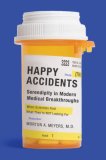Summary | Excerpt | Reviews | Beyond the Book | Readalikes | Genres & Themes | Author Bio

Critics' Opinion:
Readers' Opinion:
First Published:
Mar 2007, 408 pages
Paperback:
Dec 2008, 408 pages
 Book Reviewed by:
Book Reviewed by:
BookBrowse Review Team
Buy This Book
To their surprise, the researchers found that injected radioactive
insulin remained longer — albeit uselessly — in diabetic patients who
had received insulin than in people who had never received insulin before.
Further studies led to an astonishing discovery: a large plasma
protein, a gamma globulin antibody, was called forth as part of the
body’s immune system, inactivating the insulin and keeping it in the
bloodstream.
Then a “Eureka!” moment occurred that would have delighted
the Gestalt psychologists of perception. Because both natural insulin
and injected radioactive insulin compete for sites on the antibody molecule,
the amount of the natural hormone present in a patient’s body
can be measured. A curved line viewed from one side is convex but
viewed from the other side is concave. As Yalow put it, “Once you
saw it one way, you saw it the other way.”29 The inverse would measure
the hormone itself. In this way an unexpected finding combined
with a flash of insight, and the method of radioimmunoassay (RIA)
was born.
The term was aptly chosen because the method used radioactively
tagged substances to measure antibodies produced by the immune
system. Circulating throughout the human body in solution in
the blood are a multitude of hormones and other regulatory substances.
They are each infinitesimal in quantity but exert profound effects.
To understand bodily functions, it is necessary to determine the
presence and amount of each substance.
Yalow and Berson discovered by accident a technique so sensitive
that it can detect the equivalent of a sugar cube dissolved in Lake Erie.
This revolutionized endocrinology and its application to virtually
every system in the body. RIA is now routinely used to detect such
things as hepatitis-associated antigen in the blood of patients and
donors and the presence of steroids in the urine of athletes, and to ascertain
blood levels of therapeutic drugs. Its discovery resulted from
experiments initially designed to answer another question.
Yalow acknowledged the role of serendipity: “It was luck . . . to
discover that insulin disappears more slowly from one group of patients
than from another. . . . That’s what you mean by discovering
something by accident. You make an observation. But it isn’t by accident
that you interpret the observation correctly. That’s creativity.”31
No one would expect much science to come out of a university
dining hall experience. Nevertheless, Richard Feynman, as a twenty-eight-
year-old at Cornell, was eating in the school cafeteria when
someone tossed a dinner plate into the air. Its two simultaneous movements
caught his attention. His eyes following the red medallion insignia
of Cornell on one rim of the plate, he saw not only that it was
spinning but also that it was wobbling. He noticed something amiss:
the spinning rotation and the wobble were not precisely synchronous.
Feynman turned his characteristic playfulness and unbridled curiosity
to this trivial observation:
I had nothing to do, so I start to figure out the motion of
the rotating plate. I discover that when the angle is very
slight, the medallion rotates twice as fast as the wobble
rate — two to one. It came out of a complicated equation!
Then I thought, “Is there some way I can see in a
more fundamental way, by looking at the forces or the
dynamics, why it’s two to one?”
“There was no importance to what I was doing,” he wrote later, “but
ultimately there was. The diagrams and the whole business that I
got the Nobel Prize for came from the piddling around with the wobbling
path.” That “whole business,” as he charmingly called it, was
the application of his observation about the Cornell plate to the spin
of electrons, known as nuclear precession, and the reformulation of
quantum electrodynamics, the strange rules that govern subatomic
reality.
Excerpted from Happy Accidents by Morton Meyers, M.D. Copyright © 2007 by Morton Meyers, M.D. Excerpted by permission of Arcade Publishing. All rights reserved. No part of this excerpt may be reproduced or reprinted without permission in writing from the publisher.





The Funeral Cryer by Wenyan Lu
Debut novelist Wenyan Lu brings us this witty yet profound story about one woman's midlife reawakening in contemporary rural China.
Your guide toexceptional books
BookBrowse seeks out and recommends the best in contemporary fiction and nonfiction—books that not only engage and entertain but also deepen our understanding of ourselves and the world around us.